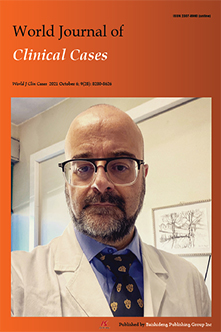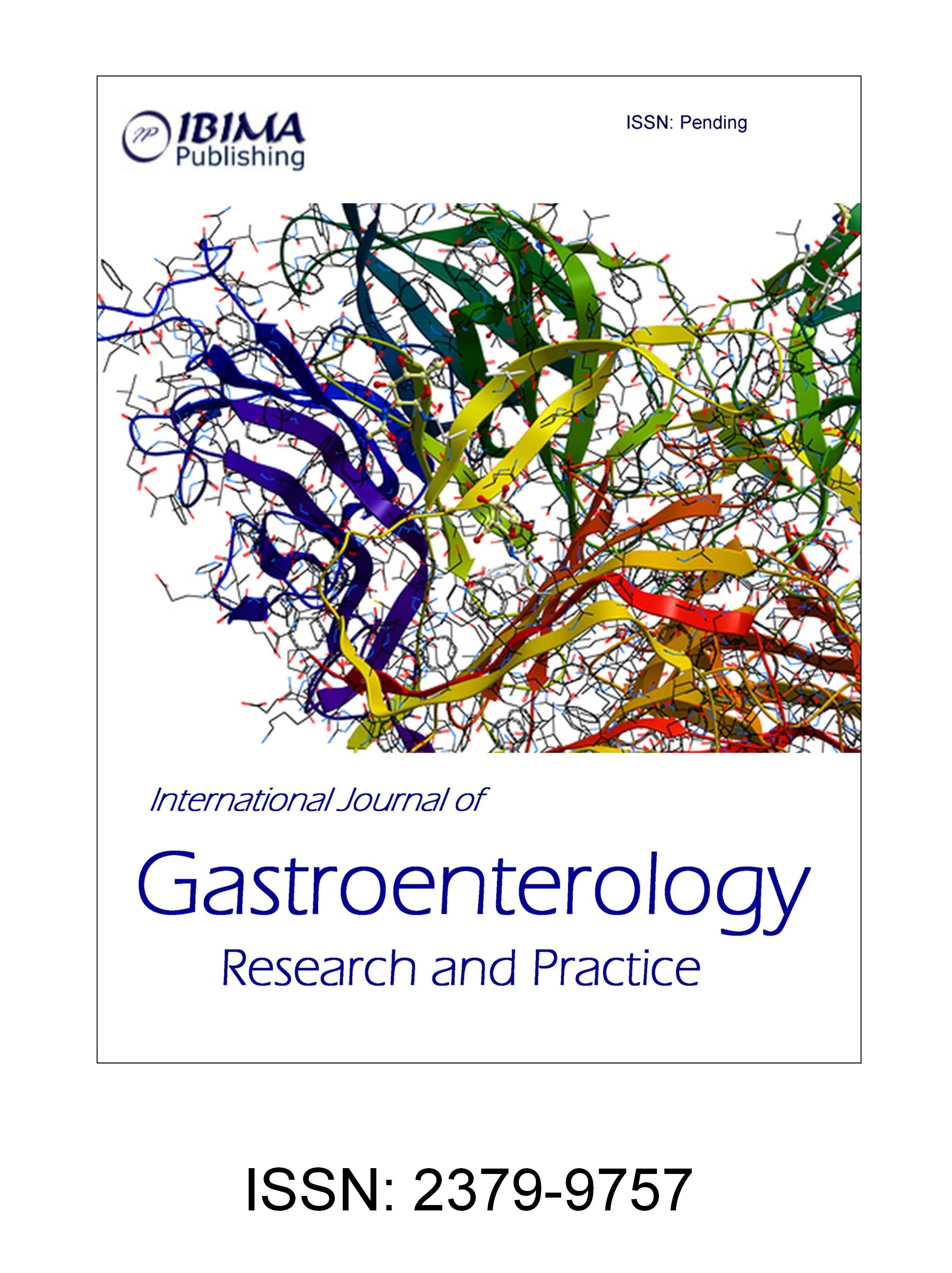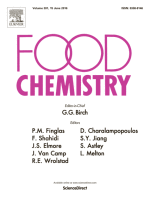H Pylori
How to submit an article:
- Registered users can submit any published journal article that has a unique DOI (Digital Object Identifier) name or link to Research Hub.
- For example, you can paste the full DOI link:
https://doi.org/10.1109/5.771073or just the DOI name:10.1109/5.771073into the field above and click submit. - The person who is first to submit a valid article to Research Hub will forever be credited for it, and every article submission earns you +6 Research Points.
Published research studies are articles that present the findings of original research that has undergone a peer-review process and has been made publicly available in scholarly journals, books or other media.

Application of traditional Chinese medicine in treatment of Helicobacter pylori infection
2021 Dec 16 World Journal of Clinical Cases Li RJ, Dai YY, Qin C, Huang GR, Qin YC, Huang YY, et al.
The antibacterial effect of TCM is relatively slow; for rapid improvement of the treatment effect of refractory H. pylori gastritis, we provide an appropriate treatment regime combining TCM and Western medicine with immune-regulatory and synergistic antibacterial effects.
Review Article H Pylori
In vitro Study of Anti-Helicobacter pylori Activity of Honey: A Systematic Review
2020 Feb 28 Sains Malaysiana Adam Q, Annuar F, Alfizah H, Mohd Fahami NA
Systematic Review Honey Gastritis Stomach Ulcer H PyloriHoney exhibits significant anti-Helicobacter pylori activity, with at least 10% concentration proving effective in inhibiting gastric and duodenal ulcers, highlighting its therapeutic potential.

Influence of Dietary Factors onHelicobacter pyloriand CagA Seroprevalence in Bulgaria
2017 Jan Gastroenterology Research and Practice Yordanov D, Boyanova L, Markovska R, Ilieva J, Andreev N, Gergova G, et al.
Cohort Study Clinical Study H Pylori Yoghurt HoneyRegular consumption of honey and yogurt may lower the prevalence of H. pylori infection and reduce the virulence of strains.

Phytochemical distribution in hull and cotyledon of adzuki bean (Vigna angularis L.) and mung bean (Vigna radiate L.), and their contribution to antioxidant, anti-inflammatory and anti-diabetic activities
2016 Jun 15 Food Chemistry Jiaqiang Luo, Weixi Cai, Tong Wu, Baojun Xu
Experimental Study Mung Bean H Pylori AntibacterialIn 2004, polyphenols were isolated from mung bean sprouts, which exert antibacterial activity against Helicobacter pylori, one of the most common causative organisms in gastrointestinal disorders.

Screening test for anti-Helicobacter pyloriactivity of traditional Chinese herbal medicines
2010 Nov 28 World Journal of Gastroenterology Ma F
Rhizoma Coptidis, Radix Scutellariae and Radix isatidis are the potential sources for the synthesis of new drugs against H. pylori.
Clinical Study Digestive Health H PyloriResearch insights are moderated by the Research Hub team and offer an at-a-glance overview of interesting research findings.

2020 Sains Malaysiana
Honey exhibits significant anti-Helicobacter pylori activity, with at least 10% concentration proving effective in inhibiting gastric and duodenal ulcers, highlighting its therapeutic potential.
Systematic Review Gastritis Honey Stomach Ulcer
In vitro Study of Anti-Helicobacter pylori Activity of Honey: A Systematic Review
Adam Q, Annuar F, Alfizah H, Mohd Fahami NA

2017 Gastroenterology Research and Practice
Regular consumption of honey and yogurt may lower the prevalence of H. pylori infection and reduce the virulence of strains.
Cohort Study Honey Yoghurt
Influence of Dietary Factors onHelicobacter pyloriand CagA Seroprevalence in Bulgaria
Yordanov D, Boyanova L, Markovska R, Ilieva J, Andreev N, Gergova G, et al.

2016 Food Chemistry
In 2004, polyphenols were isolated from mung bean sprouts, which exert antibacterial activity against Helicobacter pylori, one of the most common causative organisms in gastrointestinal disorders.
Experimental Study Antibacterial Mung Bean
Phytochemical distribution in hull and cotyledon of adzuki bean (Vigna angularis L.) and mung bean (Vigna radiate L.), and their contribution to antioxidant, anti-inflammatory and anti-diabetic activities
Jiaqiang Luo, Weixi Cai, Tong Wu, Baojun Xu
Review Articles
Review articles summarise and critically evaluate the current state of research on a specific topic or field by synthesising multiple primary research studies.

Application of traditional Chinese medicine in treatment of Helicobacter pylori infection
2021 Dec 16 World Journal of Clinical Cases Li RJ, Dai YY, Qin C, Huang GR, Qin YC, Huang YY, et al.
The antibacterial effect of TCM is relatively slow; for rapid improvement of the treatment effect of refractory H. pylori gastritis, we provide an appropriate treatment regime combining TCM and Western medicine with immune-regulatory and synergistic antibacterial effects.
Review Article H Pylori
In vitro Study of Anti-Helicobacter pylori Activity of Honey: A Systematic Review
2020 Feb 28 Sains Malaysiana Adam Q, Annuar F, Alfizah H, Mohd Fahami NA
Systematic Review Honey Gastritis Stomach Ulcer H PyloriHoney exhibits significant anti-Helicobacter pylori activity, with at least 10% concentration proving effective in inhibiting gastric and duodenal ulcers, highlighting its therapeutic potential.
Clinical Trials
Clinical trials are research studies that involve people and are conducted to evaluate the safety and efficacy of new treatments or interventions, such as drugs, medical devices, or behavioural therapies.
Study Protocols
Published study protocols are detailed plans that outline the objectives, methodology, statistical analyses, and organisation of a research study that have been made publicly available for others to review and use as a reference.
Presentation Slides

Systematic Review
Honey exhibits significant anti-Helicobacter pylori activity, with at least 10% concentration proving effective in inhibiting gastric and duodenal ulcers, highlighting its therapeutic potential.
Adam Q, Annuar F, Alfizah H, Mohd Fahami NA

Cohort Study
Regular consumption of honey and yogurt may lower the prevalence of H. pylori infection and reduce the virulence of strains.
Yordanov D, Boyanova L, Markovska R, Ilieva J, Andreev N, Gergova G, Mitov I

Experimental Study
In 2004, polyphenols were isolated from mung bean sprouts, which exert antibacterial activity against Helicobacter pylori, one of the most common causative organisms in gastrointestinal disorders.
Jiaqiang Luo, Weixi Cai, Tong Wu, Baojun Xu
Executive Summary
Write an executive summary in the form of a blog article on the topic of "Research into Chinese medicine treatment for H Pylori" summarising the research below and using language that can be easily understood by patients and avoiding medical jargon using a professional and caring tone of voice.
Write an executive summary in the form of a blog article on the topic of "Researched Chinese medicine treatments for H Pylori" summarising the research below in an objective and easy to understand way, and using language that can be easily understood by patients. Group the article into Chinese medicine treatments first, followed by nutrition and other treatments. Avoid using medical jargon and use a professional and caring tone of voice.
Write me a concise but easy to understand executive summary on the topic of "Chinese medicine treatments for H Pylori" based on the following research that I will give you. Your summary should be 2 paragraphs long in Australian English spelling and include references to the studies.
A Systematic Review published in 2020 in the journal Sains Malaysiana found that Honey exhibits significant anti-Helicobacter pylori activity, with at least 10% concentration proving effective in inhibiting gastric and duodenal ulcers, highlighting its therapeutic potential. The research involved a comprehensive review of 53 articles from electronic databases such as Medline via Ovid Medline, Scopus, and ScienceDirect spanning from 2000 to 2018. Selection criteria focused on studies reporting honey's effects on H. pylori-induced gastric and duodenal ulcers. Nine chosen articles detailed the positive impact of honey, suggesting a minimum 10% concentration as effective against H. pylori. The review underscores the need for further exploration into honey's active components and molecular mechanisms. The positive outcomes reported in selected studies support honey's potential in inhibiting H. pylori infections, emphasizing the need for further investigations to elucidate the active components and underlying molecular mechanisms. The review sets the stage for future research aiming to provide robust evidence for the use of honey in clinical settings.
A Cohort Study published in 2017 in the journal Gastroenterology Research and Practice found that Regular consumption of honey and yogurt may lower the prevalence of H. pylori infection and reduce the virulence of strains. The study evaluated the association between dietary factors and the prevalence of an unnamed infection or virulence strain among 294 adult asymptomatic blood donors. The seroprevalence was evaluated using Enzyme-Linked Immunosorbent Assay. The study employed logistic regression in its analysis. Key dietary factors studied were the frequent consumption of honey and yogurt, specifically >5 days in a week. Smoking and consumption of other dietary factors were also considered. In the analysis of results, it was found that frequent consumption of honey and yogurt was associated with reduced infection seroprevalence and virulence. Specifically, the study discovered a reverse association between honey or yogurt consumption and the prevalence of the virulence strain, marking it as a novel finding. The effect of other dietary factors and smoking were, however, found to be insignificant in disease prevalence. The study suggests that regular honey and yogurt consumption could enhance control in therapy for the infection.
A Experimental Study published in 2016 in the journal Food Chemistry found that In 2004, polyphenols were isolated from mung bean sprouts, which exert antibacterial activity against Helicobacter pylori, one of the most common causative organisms in gastrointestinal disorders. The utility of bioactive compounds from food legumes as natural antimicrobial agents are commonly known as biocides. Mung bean sprouts have potent antiviral and prophylactic activities against respiratory syncytial virus and Herpes Simplex virus −1, and these activities were comparable with Acyclovir. The underlying mechanism was attributed to active components of mung bean sprouts potentially induce antiviral cytokines in human cells and thereby nullify the actions on viral proliferation. Similarly, antifungal and antiviral potency of two beans proteins, designated alpha (28 kDa) and beta (28 kDa) proteins were isolated and were capable of inhibiting human immunodeficiency virus reverse transcriptase and glycohydrolases associated with HIV infection. Further, antifungal peptides (7.3 kDa, 9.03 kDa) were isolated from beans, which exerted an antifungal effects and inhibited mycelial growth in Fusarium oxysporum, F. solani, Pythium aphanidermatum, Sclerotium rolfsii, Mycosphaerella arachidicola, and antibacterial effects on Staphylococcus aureus. In addition, two proteins, Mungin (18-kDa) and chitinase (30.8 kDa) isolated from mung bean seeds possess antifungal activity against Rhizoctonia solani, Coprinus comatus, Mycosphaerella arachidicola, Botrytis cinerea, and Fusarium oxysporum. Mungin and chitinase exert an inhibitory activity against α- and β-glucosidases, suppressing [3H] thymidine in the corporation by mouse splenocytes. In 2004, polyphenols were isolated from mung bean sprouts, which exert antibacterial activity against Helicobacter pylori, one of the most common causative organisms in gastrointestinal disorders. Furthermore, several in vitro and in vivo studies have also been reported that mung bean seeds are protective against sepsis.
Moderation Tools
Topic
Sign In
Users not signed in are limited to viewing the 5 most recent items of content.